Making the Invisible Measurable
Trafficking in persons for forced labour constitutes a profound violation of human rights and labour standards, persisting globally despite significant efforts to combat it. Accurate and reliable data is essential for effective prevention of this crime, protection of survivors, prosecution of perpetrators, and informed policymaking. Yet, statistical systems designed to measure this crime often remain fragmented and inadequate.
For over two decades, the ILO has spearheaded global efforts to measure forced labour. Since 2005, the ILO has published four influential editions of the Global Estimates of Forced Labour, shaping international advocacy and policy. The latest estimates show approximately 27.6 million victims of forced labour in 2021, generating an estimated US$236 billion annually in illegal profits. ILO has also advanced on statistical standard setting, culminating at the 2018 International Conference of Labour Statisticians (ICLS) endorsing Guidelines concerning measurement of forced labour.
The United Nations Office on Drugs and Crime (UNODC) regularly produces its Global Report on Trafficking in Persons (GLOTIP), using administrative data from over 150 countries. The 2024 GLOTIP identified almost 75,000 detected trafficking victims for 2022 or most recent available data, where 42% of the victims were trafficked for the purposes of forced labour. This stark difference in magnitude in measuring related concepts underscores the complexity of detecting and measuring trafficking in persons and emphasizes the need for comprehensive measurement methods. It also underscores that administrative records reflect only the tip of the iceberg, as most cases of trafficking for forced labour remain undetected due to the hidden and coercive nature of these crimes. In this context, dedicated methods, such as statistically representative surveys, are essential to provide more accurate and comprehensive prevalence estimates to fully understand the magnitude of this crime, and the gap between detected victims and estimated cases. Surveys using specialized methods can reach beyond the limits of administrative data detection to capture the lived experiences of victims who never met authorities, offering crucial insights for prevention, protection, prosecution, and policy planning.
It is also worth noting that administrative data on trafficking in persons remains scattered and inconsistent at the national level. To address this, the United Nations Statistical Commission (UNSC) approved the International Classification of Trafficking in Persons (IC-TIP) in 2025, developed by UNODC and the International Organization for Migration (IOM). IC-TIP provides a harmonized global methodology for administrative trafficking in persons data collection, significantly improving comparability and data quality. Seeing administrative data and statistically representative survey data as complementary is essential; better administrative records can improve research design for surveys trying to uncover the hidden magnitude of trafficking in persons.
Enhancing Statistical Standards: Towards guidelines on measuring trafficking in persons
In 2023, the Standard Tools for Analysis of Trafficking in Persons (STATIP) project was created with support from the U.S. Department of State’s Office to Monitor and Combat Trafficking in Persons (TIP Office). It is a joint UN project led by the ILO, UNODC and IOM, with the University of Georgia’s Center on Human Trafficking Research and Outreach (CenHTRO) as academic partner. This inter-agency project addresses measurement gaps by bridging legal definitions and statistical frameworks for trafficking in persons and forced labour. This project’s main objective is to produce concrete statistical guidance to support National Statistical Offices (NSOs) and other institutions in generating high-quality, internationally comparable official statistics on trafficking in persons for forced labour. The project aims at developing robust and field-tested survey methodologies that address the complex and often hidden nature of this crime. It streamlines statistical guidance, reducing confusion, duplication, and inefficiency by facilitating the alignment of tools and questions developed by different actors with unified standards and frameworks across the fields of trafficking in persons and forced labour.
Bridging Legal Definitions and Statistical Frameworks
Trafficking in persons is defined by the Protocol to Prevent, Suppress and Punish Trafficking in Persons, Especially Women and Children (2000), also known as the Palermo Protocol, involving three main terms: acts (recruitment, transportation, transfer, harbouring or receipt of persons), means (the use of coercion or deception), and forms of exploitation (identifying forced labour as one of them). Forced labour, outlined in ILO Convention No. 29 (1930), refers to involuntary work performed under coercion. While statistical guidelines for forced labour measurement were adopted by the International Conference of Labour Statisticians (ICLS) in 2018, a comparable standard for trafficking in persons remains lacking, complicating data collection and policy responses.
Translating legal concepts of trafficking—originally for prosecution—into a statistical framework to measure victimization is complex, but it is attainable. Legal definitions rely on broad concepts such as intent, coercion, and exploitation, elements that are difficult to observe directly and therefore pose challenges for measurement. Statistical frameworks require measurable, observable terms to measure victimization consistently. By translating these abstract concepts into variables and measurable indicators, the STATIP project creates standardized data collection and analysis methodologies to support evidence-based policymaking, while allowing for national legislation and practice to be considered when conducting research.
Diverse Survey Approaches for Comprehensive Insights
To effectively measure and respond to trafficking for forced labour, the project encourages and provides guidance for the design and implementation of both general population and targeted survey methodologies. Together, these approaches can generate a more accurate, nuanced, and actionable understanding of the crime across different settings and population groups.
General Population Surveys
- A general population survey —or a dedicated module within an existing survey within the national statistical system—aims to estimate the prevalence of trafficking across broader populations. Their large-scale, representative design ensures alignment with the monitoring needs of international frameworks and national action commitments on trafficking in persons.
- Because these phenomena are relatively rare and often hidden, these surveys must rely on very large sample sizes to produce statistically robust estimates. To address these inherent challenges, STATIP is advancing a range of methodological innovations to make sampling more effective and resource efficient. These include linked surveys, oversampling of subpopulations known to be at higher risk, targeted sampling of households with specific risk indicators, and adaptive cluster sampling.
- In addition to prevalence estimation, general population surveys also serve broader purposes: they contribute to public awareness, strengthen the visibility of trafficking and forced labour in national data ecosystems, complement available administrative data which does not provide the full picture of the problem (hidden figure), and support evidence-based policymaking.
Targeted Surveys
- Targeted surveys focus on vulnerable or at-higher risk to trafficking populations, or specific sectors in countries where labour conditions might fail to meet national and international standards. These populations are often underrepresented in general surveys but face elevated exposure to trafficking risks.
- These surveys are critical for programming, providing the granular, context-specific insights needed to tailor interventions, allocate resources effectively, and measure victimization impact to address the specific needs of affected groups. Additionally, targeted surveys can be designed to track changes and assess the impact of anti-trafficking initiatives over time, offering a tool to evaluate the effectiveness of prevention and protection strategies.
- To improve data quality in challenging contexts, STATIP encourages the use of modern, non-probability-based sampling approaches that enable valid statistical inference for hard-to-reach populations. Among these are network-based techniques, such as respondent-driven sampling (RDS) and its methodological variations, which are particularly effective in reaching hidden or stigmatized populations. The Prevalence Reduction Innovation Forum (PRIF), led by University of Georgia, has piloted several of these methodologies in the past years, offering valuable lessons for future implementation across diverse settings.
Ethical and Methodological Rigor in Surveys
Designing and collecting data on sensitive topics like trafficking in persons for forced labour requires both ethical rigor and methodological precision. That is why the tools being developed for the STATIP project are designed not only to measure trafficking victimization, but to do so in a way that promotes comparability, consistency, and coherence across different contexts.
To ensure alignment with legal definitions and frameworks, the tools must meet demanding analytical requirements. These are translated into specific dimensions that surveys need to capture. Identifying victims statistically may require combining multiple variables and survey questions, depending on the specifics of the exploitation. At the same time, the project prioritizes creating instruments that are logical, easy to follow, and minimize respondent burden—striking a balance between analytical depth and practical usability.
To avoid the risks of oversensitivity (false positives) and undersensitivity (false negatives), the questionnaire undergoes rigorous cognitive testing using structured protocols. Ethical safeguards are embedded throughout the data collection process, including informed consent, comprehensive enumerator training, safety protocols, referral procedures, and context-specific pretesting.
STATIP draws on the ILO’s deep expertise in this field, making use of established resources such as the 2018 ICLS Guidelines, the 2024 edition of “Hard to See, Harder to Count”, and the Synthesis Report on National Forced Labour Surveys (2024). It also incorporates respondent-centered approaches inspired by innovative work from UK Office for National Statistics (ONS). STATIP also builds on UNODC’s lessons learned from the implementation of crime victimization surveys, particularly in recognizing the importance of sensitive question design, interviewer training, and ethical safeguards to elicit reliable responses on underreported and stigmatized experiences. These lessons underscore the need for careful framing, culturally appropriate terminology, and strong protections for respondent confidentiality, all of which are integrated into the STATIP methodology to enhance data quality and respondent safety in measuring trafficking in persons.
By combining robust methodology with ethical diligence, STATIP aims to produce reliable, actionable data—while respecting the dignity and safety of all respondents.
A Co-Creative and Inclusive Process with Member States and NSOs
STATIP actively engages NSOs, ministries, civil society, CSOs, survivor groups, sectoral specialists, tripartite constituents, academics, and other stakeholders in the development of the survey toolkit and statistical standard. In 2024, jointly with Peru’s National Institute of Statistics and Informatics (INEI) and the Uganda Bureau of Statistics (UBOS), ILO co-organized regional Expert Group Meetings (EGMs) in Lima, Peru and Kampala, Uganda, involving over 30 NSOs and regional organizations in discussions to build, test and refine the tools. Additional EGMs will be implemented to ensure representativeness from all regions of the globe. A global consultation of the statistical guidelines and tools will also take place. These dialogues ensure statistical tools reflect diverse national realities.
Progress and Next Steps: A Phased Approach
STATIP’s structured approach includes:
- 2023–2026: Methodological development, accompanied by iterative technical reviews and stakeholder consultations
- 2025–2026: Pilot testing in selected countries, ensuring regional representativeness, to inform instrument refinement and validation
- 2026: Finalization of full statistical tools – including statistical guidelines, measurement instruments, training manuals, and ethical guidance. Submission of draft statistical guidelines for global consultation
- 2027: Submission of finalized statistical guidelines to the UN Statistical Commission for formal review and endorsement
Towards Evidence-Based Action
Accurate measurement of human trafficking is essential to revealing its magnitude in a globally comparable way, preventing trafficking, protecting victims, and prosecuting offenders. STATIP integrates statistical rigor, ethical standards, and legal frameworks, ensuring global applicability. It also facilitates the production of evidence around “what works” in prosecuting, preventing and protecting victims. The comprehensive data generated will strengthen protections, advance justice, allow evidence-based policymaking, and foster international cooperation.
We are interested in continuing to engage with NSOs interested in piloting the measurement tools developed under the project. For more information or any queries concerning the project, contact statip-project@ilo.org.
This post was made possible through support provided by the United States Department of State, under the terms of Award No. SSJTIP22CA0028. The opinions expressed herein are those of the author(s) and do not necessarily reflect the views of the United States Department of State.
Authors
-

Gady Saiovici
Gady is a Senior Economist at the Research and Evaluation Unit of ILO’s Fundamental Principles and Rights Work Branch and project manager of the joint ILO-UNODC-IOM STATIP (Standard Tools for Analysis of Trafficking in Persons) project. With the ILO, he has worked with design and implementation of child labor and forced labor surveys in several countries. Previously he has worked on several human development, marginalized groups and statistical areas with The World Bank, UNECE and UNHCR, authoring analytical and policy reports.
View all posts -

Luisa Sanchez Iriarte Mendoza
Luisa is a Statistician at the Research and Evaluation Unit of ILO’s Fundamental Principles and Rights at Work Branch, where she works on the STATIP project on developing standardized tools to improve the measurement of trafficking in persons. She previously served as Researcher at the United Nations Office on Drugs and Crime (UNODC) and acting Coordinator at the UNODC-INEGI Centre of Excellence, supporting Latin American and Caribbean countries in implementing international crime statistics standards, particularly on victimization. Her work spans in technical assistance, developing tools and publications on cybercrime, drug use surveys, risk factors, and gender in criminal justice statistics. She holds degrees in criminology, criminal justice, and victimology.
View all posts
